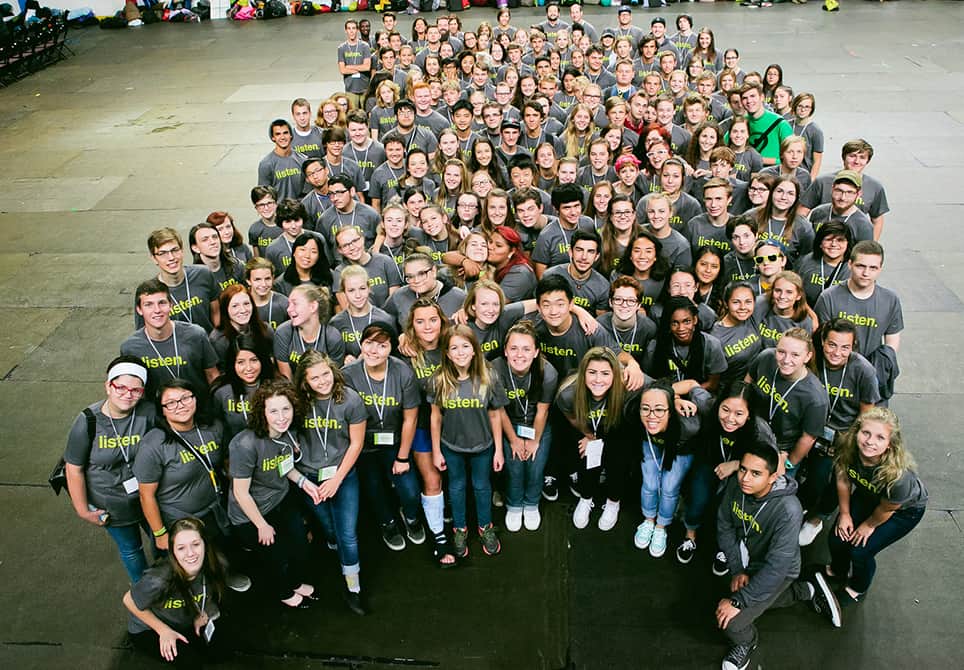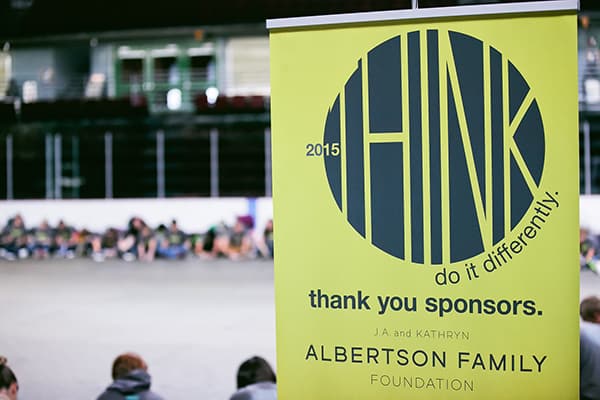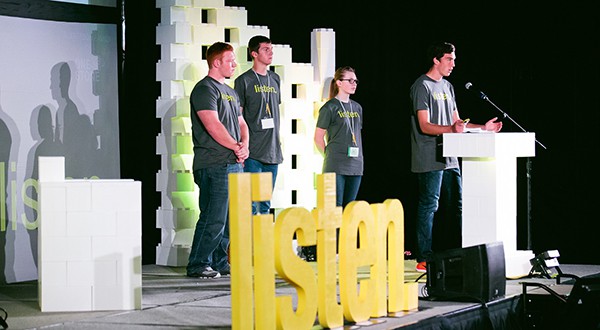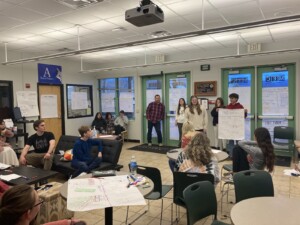The Role of Student Voice, Passion and Communication in Reimagining Education Policy

I’m a debater.
Of course, when I make that claim, you probably have a few preconceptions. Conversely, you may be wanting a few warrants right about now.
Despite what you may think, the debate community is not constituted entirely of sequestered nerds. In addition to a quite diverse community, you’ll find an incredible amount of drive.
A debater will spend hours perfecting an argument they may never use in a round. A debater will pour their heart into a six minute speech without skipping a beat. A debater will champion an argument they don’t even agree with. A debater will learn the biography of Aristotle if it will help them win a round.
But why would debaters, students, teenagers, expend so much effort? Aren’t they already busy enough with their school work? Sports? Community service? Hobbies? Sleep?
The answer is passion.
I had the privilege of participating in this year’s 24 Hour Think Challenge. The event, organized by the student led non-profit One Stone and sponsored by the J.A. and Kathryn Albertson Family Foundation and countless other contributors, aimed to give high school students the opportunity to explore Idaho’s education issues. At the event, students were given a crash course in design thinking, and 24 hours to identify a concern and formulate solutions. Students worked in small groups along with “coaches” who facilitate the process and the input of several community “experts.”
Now, as a debater, I’m no stranger to critical thinking or problem solving. During the tournament season, it’s essentially my job to dissect problems and communicate solutions. I’m no stranger to public speaking, either. Far from being afraid, I find it fun. Even though I dislike the sound of my own voice, I’ll listen to myself for hours on repeat to memorize my speeches. I’ve found a passion for using my voice, and I’ve learned that it can be a powerful thing.
At the climax of the 24 Hour Think Challenge, each student group was given a voice to present their ideas.
The results literally spoke for themselves. Across the board was almost unanimous attention to the power of student passion and a push for individualized learning.
In a debate round, passionate students use their findings and personal voices to discuss the numerous, nuanced elements of a given proposition, and to advocate for a certain side. The round is a safe space for thought-provoking discussion. The 24 Hour Think Challenge was strikingly similar. Passionate students worked expediently to form their arguments. Finally, as ideas were presented, influential community members listened. As pitches were made, students’ voices were finally heard.
But, also like the debate space, the Think Challenge had thick walls. At the end of a debate round, the speakers shake hands and leave the judges to decide the winner. The judge signs the ballot and sets it aside, and everyone moves on. An hour of discussion regarding the feasible facilitation of monumental change is set aside. The Think Challenge is at risk of falling to the same fate. The event attracted media attention, and students were given their moment in the spotlight. At the conclusion of 24 hours, the arena emptied, the lights cut out, and the discussion stopped.
Thinking is easy. Expressing ideas is a seamless second step. Initiating change is the true challenge. None of us are strangers to this process called “education.” However, we are equally infantile in regards to future territory. The 24 Hour Think Challenge is the first step in a long journey of changing Idaho’s education system. The Think Challenge initiates conversation, but there is an extended obligation to continue the dialogue.
My group, which I was fortunate to work with, observed that policymakers are missing out on critical information. There is a profound disconnect between today’s students and the students of the last generation. Students and policymakers are failing to hear each other’s voices, and failing to understand and empathize when they do. Also left out of the loop are employers, who desperately need a strong, educated workforce. In many cases, as a result of their positions, students are all but cut off from job experience. Policymakers are unable to implement effective change without consultation with students. Conversely, students are unable to participate in change when they do not understand the reasons driving policy decisions. The mutual failure to collaborate has created a stalemate in Idaho’s education system, and every party involved is responsible for its resolution.
Our group proposed a three step approach. First, we would open communication channels between students, employers, and policymakers, and give them a better understanding of one another. Next, we would promote a statewide campaign to champion student voice. Finally, we would see the direct injection of student voice in Idaho’s education system – two student representatives on the state board.
Our strategy encompassed two criteria for healthy learning: the power of the voice, and the power of passion. Communication is the key to exploring issues, and passion is the key to carrying out a difficult task.
Together, passion and communication dominate the debate space. Passion is the gas of motivation. With passion, students are reinvigorated in their learning, and given the push they need to be studious and well-rounded. Communication is the steering system, guiding discourse and providing the surest direction to the destination. Together, passion and discussion jointly enable students to reach their goals. They allow policymakers to understand the unique, individualized environments students need to be successful, and they allow employers to provide accessible, effective skill-building outlets for students. Passion and communication are necessary components in Idaho’s drive for a better education system.
The Think Challenge was the first step.
Now let’s take things one step further.
Young people are taking control of their own pathway to careers, college and contribution. Powered by digital learning, “GenDIY” is combatting unemployment and the rising costs of earning a degree by seeking alternative pathways to find or create jobs they love. Follow their stories here and on Twitter at #GenDIY.
For more, check out:
- Getting Smart Podcast | GenDIY: Emerging Options for Students Navigating Life
- Design Thinking for Student Ownership of Learning
Eli Neal is student at Bishop Kelly High School. He was a participant in the 24 Hour Think Challenge.
Stay in-the-know with all things EdTech and innovations in learning by signing up to receive the weekly Smart Update.









0 Comments
Leave a Comment
Your email address will not be published. All fields are required.